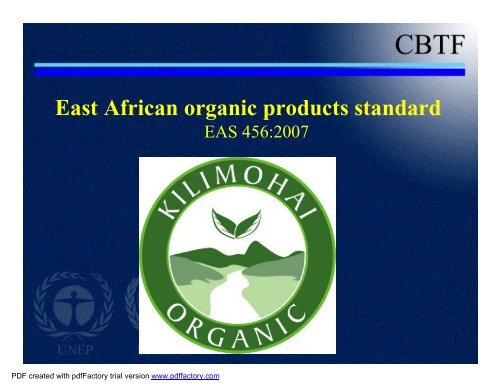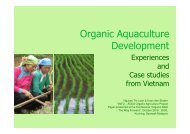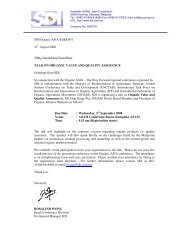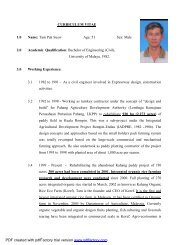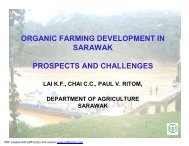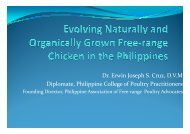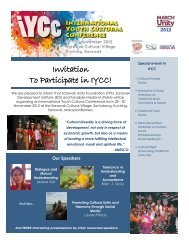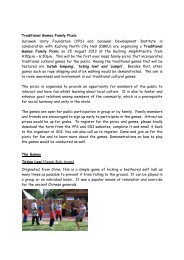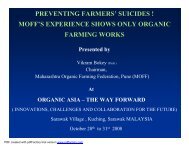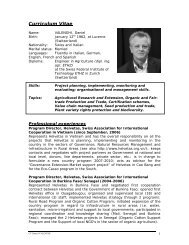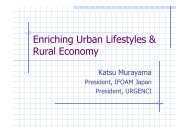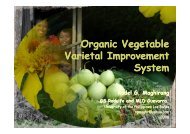sophia twarog
sophia twarog
sophia twarog
- No tags were found...
You also want an ePaper? Increase the reach of your titles
YUMPU automatically turns print PDFs into web optimized ePapers that Google loves.
East African organic products standardEAS 456:20071PDF created with pdfFactory trial version www.pdffactory.com
Starting point2005 in East Africa:•Strong production and export growth•Small domestic markets•No regional trade•Five public and private organic standards•Stakeholders concerned that this multitude ofstandards could become a technical barrier totrade within the region and place unneededrestrictions on regional collaboration.2PDF created with pdfFactory trial version www.pdffactory.com
Benefits of regional standard• common understanding of what OA is in East Africa• raise awareness about OA among farmers,consumers, policymakers• boost organic trade and market development in theregion• facilitate international market access• influence international organic standard settingprocesses• Promote regional cooperation (e.g. common trainingmaterials)3PDF created with pdfFactory trial version www.pdffactory.com
A public-private partnership•RSTWG composed of a cross -section ofstakeholders–5 representatives from NBSs Kenya, Tanzania,Uganda Rwanda and Burundi.–3 from certification bodies,–3 from NOAMs–1 from the East African Business Council–Facilitators from IFOAM and UNEP-UNCTAD CBTF4PDF created with pdfFactory trial version www.pdffactory.com
RSTWGRegional Standards Technical Working Groupthe facilitators of the East African Organic Products Standard5PDF created with pdfFactory trial version www.pdffactory.com
Work done• 4 meetings of the RSTWG (Oct 05; March,May & Dec 06)• Widestakeholder consultations• National consultative meetings May & Dec 06• Field testing Nov 06• Comparison with international standards(Codwx and IFOAM)• Joint meeting RSTWG & IFOAM StandardsCommittee(Dec 06)6PDF created with pdfFactory trial version www.pdffactory.com
Work done (cont.)• KEBS submits EAOPS to the Committeeresponsible for standards in the EAC(EASTSC) Jan 07•The EASTSC approved the document inFeb 07•The EAC Council of Ministers approvedin April 07•Launch of the EAOPS in May 2007 byPrime MinisterLowassa of Tanzania7PDF created with pdfFactory trial version www.pdffactory.com
Launching the EAOPS, May 20078PDF created with pdfFactory trial version www.pdffactory.com
EAOPS Content• Covers crop production, animal husbandry,bee-keeping, wild harvesting; handling,storage, processing; and labelling• Tailored to East African conditions (e.g.smallholdings, livestock, wildlife corridors formigratory animals, no clearing of primaryecosystems)• Does not include provisions related toinspection and certification, to leave optionsopen for PGS9PDF created with pdfFactory trial version www.pdffactory.com
East African Organic Mark10PDF created with pdfFactory trial version www.pdffactory.com
EAOM• Jointly owned and managed by the national organicmovements, umbrella open inclusive• May be affixed to:• products produced in East Africa according to theEast African Organic Products Standard• Products produced outside East Africa accordingto standards including EU, USNOP, JAS, China,etc.11PDF created with pdfFactory trial version www.pdffactory.com
Lessons learned• Importance of partnership: CBTF-IFOAM andwithin region• Unifying effect of common vision and goal:-East African Organic Team• Momentum and visibility• Importance of Common mark/logo• Boosts domestic markets & regional trade• Need for follow-up actions to get full effect12PDF created with pdfFactory trial version www.pdffactory.com
Next steps• Joint inspection protocol• Promote uptake in market through awarenessraising among consumers and organicoperators• Seek EU recognition as equivalent standard13PDF created with pdfFactory trial version www.pdffactory.com


